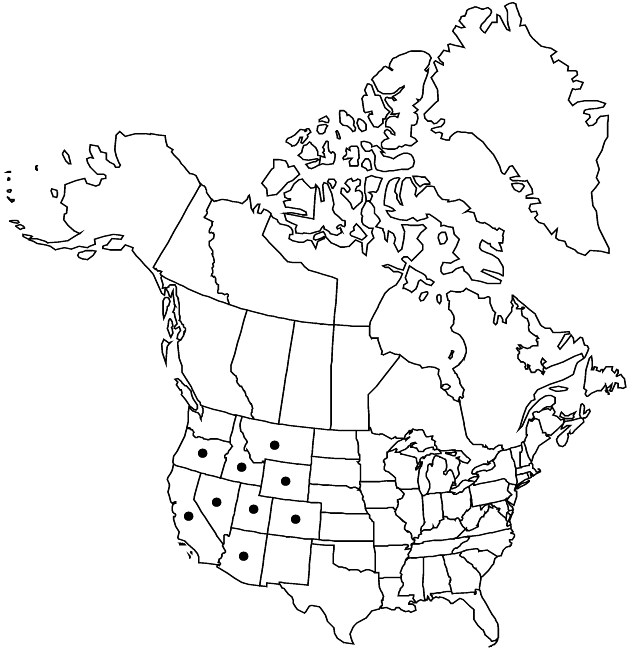Difference between revisions of "Malacothrix torreyi"
Proc. Amer. Acad. Arts 9: 213. 1874.
FNA>Volume Importer |
FNA>Volume Importer |
||
| Line 33: | Line 33: | ||
-->{{#Taxon: | -->{{#Taxon: | ||
name=Malacothrix torreyi | name=Malacothrix torreyi | ||
| − | |||
|authority=A. Gray | |authority=A. Gray | ||
|rank=species | |rank=species | ||
| Line 48: | Line 47: | ||
|publication year=1874 | |publication year=1874 | ||
|special status= | |special status= | ||
| − | |source xml=https://jpend@bitbucket.org/aafc-mbb/fna-data-curation.git/src/ | + | |source xml=https://jpend@bitbucket.org/aafc-mbb/fna-data-curation.git/src/eaa6e58056e40c9ef614d8f47aea294977a1a5e9/coarse_grained_fna_xml/V19-20-21/V19_490.xml |
|tribe=Asteraceae tribe Cichorieae | |tribe=Asteraceae tribe Cichorieae | ||
|genus=Malacothrix | |genus=Malacothrix | ||
Revision as of 20:19, 16 December 2019
Annuals, (5–)10–25(–40) cm. Stems 1–5+, erect to ascending, branched from bases and distally, sparsely leafy, usually ± stipitate-glandular, sometimes sparsely arachnose or glabrous (sometimes glaucous). Cauline leaves: proximal obovate to oblong, usually pinnately lobed (lobes 3–8 pairs, oblong or triangular to linear, apices obtuse to acute), ± fleshy, ultimate margins dentate, faces usually glabrous, sometimes sparsely arachnose; distal reduced (± elliptic, then pinnately lobed, to linear, bases narrowly cuneate, margins usually dentate, sometimes entire). Calyculi of 8–12+, lance-ovate to lanceolate bractlets, hyaline margins 0.5–0.2 mm wide (faces sometimes stipitate-glandular). Involucres ± campanulate, 8–14 × 4–5 mm. Phyllaries 12–20+ in 2–3 series, lance-oblong to lance-linear (apices acuminate), hyaline margins 0.05–0.3 mm wide, faces glabrous or stipitate-glandular. Receptacles sparsely bristly. Florets 58–93; corollas medium yellow, 14–20 mm; outer ligules exserted 7–10 mm. Cypselae cylindro-fusiform, 2.5–4 mm, ribs extending to or beyond apices, 5 more prominent than others (often winglike); pappi persistent, of 12–15 blunt teeth plus 0–6 bristles. Pollen 70–100% 3-porate. 2n = 14.
Phenology: Flowering Apr–Jul.
Habitat: Coarse soils, dry sagebrush slopes, Artemisia-Atriplex-Tetradymia associations, Juniper grasslands, Pinyon-Juniper woodlands
Elevation: 700–2000 m
Distribution

Ariz., Calif., Colo., Idaho, Mont., Nev., Oreg., Utah, Wyo.
Discussion
Malacothrix torreyi grows primarily in the Great Basin Desert (in the Inyo Mountains and Modoc Plateau, California), and throughout the Intermountain Region in Arizona (Grand Canyon Plateau), Nevada (Central Great Basin, Uintah and Henry mountains, Flaming Gorge area near Pyramid Lake), Utah (northern), Idaho (Snake River Plateau), Wyoming (Ft. Steele, Green River), and Oregon (Steen Mountains, Owyhee Desert).
Selected References
None.